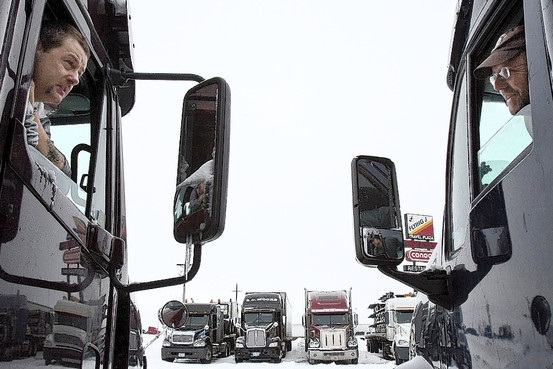Cargo Theft Awareness Driving Down Incidents
by Jana Ritter - Published: 11/13/2013Incidents of cargo theft appear to be on the decline, possibly due to a heightened awareness by shippers of the need to protect their goods while in transit.

There were 195 incidents in the third quarter of this year, according to the Supply Chain Information and Analysis Center (SC-ISAC). That’s one more than in the previous quarter, but down sharply from the 285 reported in the same period of 2012. The third quarter is usually the period of highest theft activity during the year, according to J.J. Coughlin, director of law enforcement services with SC-ISAC. That’s the peak time for shipments of consumer goods destined for sale during the Christmas shopping season.
One possible reason for the drop in incidents is the busting of several major cargo-theft rings last year, Coughlin said. Another is that shippers and carriers are doing a better job of securing their high-value freight. ”They’re starting to actually deal with it.” Manufacturing of pharmaceuticals and tobacco, long subject to high levels of theft, have been especially vigilant in the last five years. “Those industries have really tightened up,” said Coughlin.
However, the problem of cargo theft in the U.S. remains a serious one. According to FreightWatch International, it results in an annual loss to shippers of $35 billion. Food, electronics, base metals and apparel are the most vulnerable categories, accounting for 54% percent of all reported incidents. The average loss per load this year was $126,000, but it can climb into the millions where electronics, tobacco or pharmaceuticals are involved.
California was by far the state with the highest level of theft in the third quarter. It was followed by Florida, Texas, Illinois and New Jersey. (Texas actually exceeded Florida in FreightWatch’s statistics for 2011. Still, South Florida remains a hotbed of organized crime targeting cargo shipments, Coughlin said.)
Criminals often carefully select the type of product and load they wish to steal. They might watch a distribution facility for weeks, becoming familiar with its patterns of activity and ascertaining the best time to strike. Ninety percent of cargo theft occurs during transit by truck, FreightWatch reports. Yet holdups involving weapons are relatively rare. Instead, truck stops have become popular locations for thieves, who will follow a driver to the facility, then wait for the vehicle to be left unattended.
SC-ISAC has seen a big uptick in incidents of fraud as a means of stealing cargo. Thieves will either steal the I.D. of an existing trucking company or create one from scratch, based on fictitious information. Some companies have formed regional security councils, which they use to share information and provide data to SC-ISAC and similar entities. Technology can also help. On-board systems can lock out unauthorized drivers. Satellite-based monitoring tells fleet managers precisely where vehicles are, how fast they’re going, and even the number of times that a driver applies the brakes. Trucks can also be disabled remotely.
Even the most sophisticated security system is useless without diligence by truck owners and operators, however. SC-ISAC hopes the latest numbers show progress in that direction.
